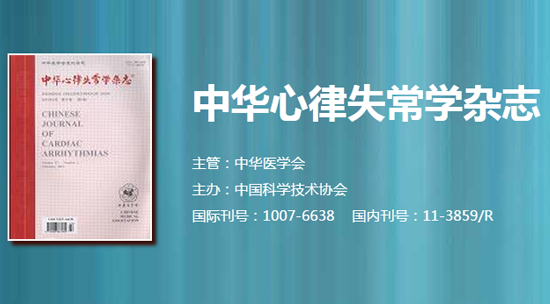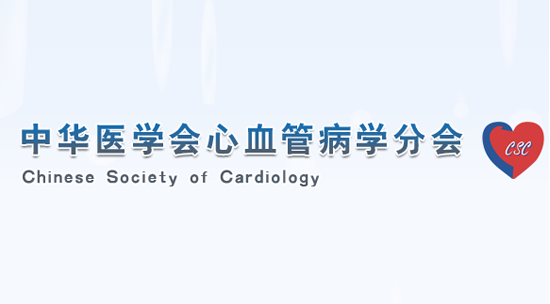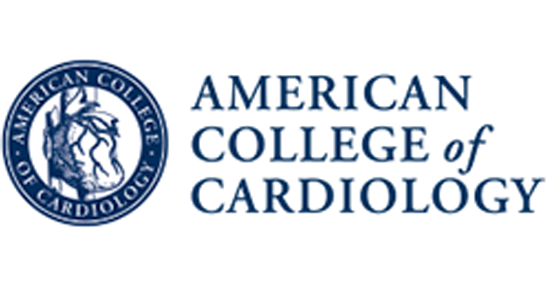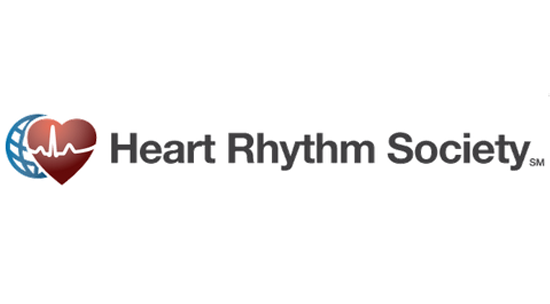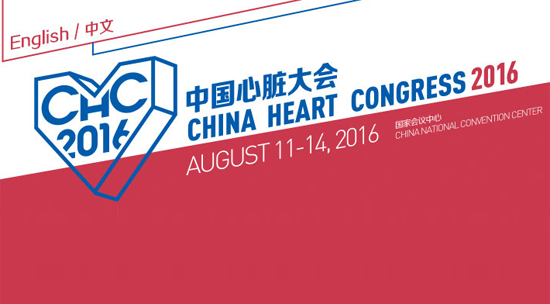Heart Rhythm主编—陈鹏生教授语音速递(八月刊 英文版)
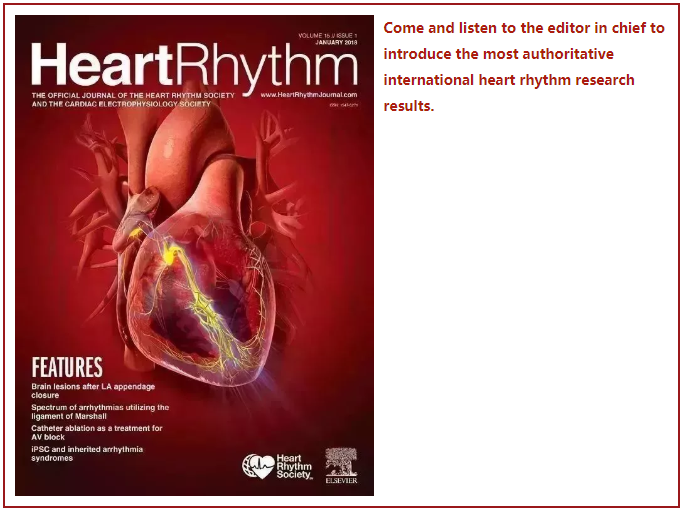
1
The featured article this month is titled “Posterior Wall Isolation Using the Cryoballoon in Conjunction with Pulmonary Vein Ablation Is Superior to Pulmonary Vein Isolation Alone in Patients with Persistent Atrial Fibrillation: A Multicenter Experience”. This article was authored by Aryana et al from Mercy General Hospital, in Sacramento, California. An author interview conducted by our online editor, Dr Daniel Morin can be found at the www.heartrhythmjournal.com website. The authors examined the long-term outcomes in 390 consecutive patients with persistent AF who underwent a first-time cryoballoon ablation procedure using PVI alone or PVI in conjunction with posterior LA isolation. The authors found that PVI and posterior wall isolation can be achieved safely and effectively using the cryoballoon. Posterior wall ablation was associated with higher AF termination and a lower incidence of recurrent atrial arrhythmias. The authors conclude that PVI plus posterior wall isolation appears superior to PVI alone in patients with persistent AF. While the study is not a prospective randomized trial, it provided new information on posterior wall isolation using cryoballoon. A prospective randomized trial is needed to confirm these conclusions.
2
A second article is “Role of NT-proANP and NT-proBNP in patients with atrial fibrillation: Association with atrial fibrillation progression phenotypes” by Büttner et al from Leipzig University, in Leipzig, Germany. The progression of AF is often characterized by a switch from paroxysmal to persistent AF and by increased left atrial diameter. Another important variable associated with AF progression patterns and severity stage is peri-procedural evidence of low-voltage areas identified during sinus rhythm representing advanced remodeling processes in the left atrium. The authors found that NT-proANP—but not NT-proBNP—levels were significantly higher in patients with low-voltage areas. NT-proANP levels increased according to 4 disease progression groups. It is the lowest in paroxysmal AF without low-voltage areas and becomes progressively higher in persistent AF without low-voltage areas, paroxysmal AF with low-voltage areas, and persistent AF with low-voltage areas. NT-proANP and NT-proBNP are expressed by cardiomyocytes, but ANP expression is highest in the atria whereas BNP expression is higher in the left ventricle. The authors found that NT-proANP is a specific biomarker for AF progression. These findings may help refine individualized therapy in patients with AF to predict or prevent AF progression.
3
Up next is “Ablation strategies for the management of symptomatic Brugada syndrome: A systematic review” by Fernandes et al. from the University of Miami. The authors systematically reviewed 11 case series and 11 case reports including a total of 233 patients. Ablation strategies in the majority of patients included epicardial mapping with substrate modification, which was associated with 96% success rate in preventing VT/VF during a 2.5- to 78-month follow-up period. The other strategies, such as endocardial ablation and triggering premature ventricular complex ablation, were less successful. The authors conclude that epicardial substrate modification appears to be more effective than endocardial-only approach in preventing VT/VF. Ablation seems to be an acceptable strategy for patients with Brugada syndrome and VT/VF. This is a nice summary of the existing literature. The high success rate of epicardial substrate modification suggest that some patients are cured, and thus may not need ICD implantation. This can be tested in future prospective clinical trials.
4
The next paper is “Right atrial dual-loop reentrant tachycardia after cardiac surgery: Prevalence, electrophysiological characteristics, and ablation outcomes” by Yang et al from Fuwai Hospital, in Beijing, China. The authors identified all patients with atrial tachycardia after cardiac surgery. Of the 127 patients with 152 postsurgical ATs, 18% had RA dual-loop reentry and 86% had tricuspid annular reentry combined with free wall incisional reentry. An incision length >51.5 mm along the free wall predicted the substrate for a second loop. Ablation was successful in about 90% of the patients. A long incision should alert physicians to the possibility of a second loop at the free wall. In those patients, complete mapping of entire RA will be needed to successfully identify and ablate the reentrant arrhythmias.
5
The next paper is “High-density mapping and ablation of concealed low-voltage activity within pulmonary vein antra results in improved freedom from atrial fibrillation compared to pulmonary vein isolation alone” by Segerson et al from Harrison Medical Center, in Bremerton, Washington. The authors conducted a case control study comparing 150 patients undergoing high density-mapping-guided PVI and subsequent concealed low-voltage signal mapping and ablation against 452 historical controls undergoing traditional PVI alone. PVI was similarly performed and confirmed in both groups. The authors found that concealed low-voltage signals are commonly identified using high density mapping after PVI, likely representing vulnerabilities in antral lesion sets. Ablation of these targets seems to significantly improve freedom from AF compared to PVI alone. This study presents the concept of residual low-voltage propagation within the PV antra after PVI is achieved. These residual low voltage propagations could lead to future reconnection. Therefore, the use of high-density mapping to identify those low voltage propagation areas could potentially improve the success rate of PVI for atrial fibrillation.
6
The title of the next article is “Early feasibility of hypoglossal nerve upper airway stimulator in patients with cardiac implantable electronic devices and continuous positive airway pressure-intolerant severe obstructive sleep apnea”by Parikh et al from Kansas University Medical Center. Implantable hypoglossal nerve upper airway stimulation is a novel method to manage obstructive sleep apnea (OSA) in patients intolerant to CPAP therapy. The authors retrospectively studied 14 patients who also had cardiac implantable electronic devices, or CIEDs, to evaluate whether the two devices interacted. All the hypoglossal nerve stimulation devices were implanted on the opposite side of the CIED. No oversensing episodes were noted on the CIEDs. These findings suggest that simultaneous use of a novel hypoglossal nerve upper airway stimulation device with transvenous CIEDs does not result in device–device interactions. Because many patients with OSA also have cardiac arrhythmias, these findings are reassuring.
7
Jesel et al from University Hospital of Strasbourg, France authored the next paper, titled “Ventricular arrhythmias and sudden cardiac arrest in Takotsubo cardiomyopathy: Incidence, predictive factors, and clinical implications”. They studied 214 consecutive cases of Takotsubo cardiomyopathy over 8 years. Life threatening arrhythmias occurred in 10.7% of patients and were associated with lower left ventricular ejection fraction and a QRS duration >105 ms. These arrhythmias were associated with significantly increased mortality. Ventricular arrhythmias occurred in the acute phase without further recurrence recorded in hospital survivors, whereas severe conduction disorders persisted during long-term follow-up. These findings may have implications on the choice of device therapy for this specific subgroup of patients.
8
Next up is “Copy number variations of SCN5A in Brugada syndrome” by Sonoda et al from Niigata University, in Niigata, Japan. The authors studied 151 Brugada syndrome probands and identified pathogenic SCN5A mutations in 20 of them. Four probands were found to present different copy number variations. Three of them had fatal arrhythmia events; the remaining 1 was asymptomatic but had a family history. All of the baseline 12-lead electrocardiograms showed PQ-interval prolongation. The characteristics of these 4 probands with copy number variations were similar to those of the probands with mutations leading to premature truncation of the protein or missense mutations causing peak INa reduction >90%. The authors conclude that they have identified SCN5A copy number variations in 2.9% of Brugada syndrome probands. Copy number variation is a type of duplication or deletion event that affects a considerable number of base pairs in the DNA sequence. Before this paper, there has been only occasional case reports of copy number variations in Brugada syndrome. This paper is important because the authors showed copy number variation is not that rare among the probands of Brugada syndrome. It can be associated with significant loss of sodium current, causing severe arrhythmia phenotypes.
9
The next article is “Visualization of acute edema in the left atrial myocardium after radiofrequency ablation: Application of a novel high-resolution 3-dimensional magnetic resonance imaging sequence”. This article was written by Zghaib et al of the Johns Hopkins University, reporting a new MRI technique that can better visualize edema in the thin walled left atrium. They first sought to optimize and validate a high-resolution T2-weighted imaging technique called SPACE, with comparison to the standard conventional dark-blood turbo-spin echo (DB-TSE) sequences. They then applied these methods to study 14 AF patients. The results show that signal-to-noise ratio and contrast-to-noise ratio were higher on SPACE vs DB-TSE. The authors conclude that T2-SPACE can be used to map the extent of acute postablation edema in the thin LA myocardium, with improved resolution and lower artifact compared to traditional DB-TSE. Current available technology does not allow the electrophysiologist to distinguish sites of tissue necrosis from areas of edema. These new techniques have the potential to accurately assess the composition of ablated tissue acutely after lesion placement with the goal of detecting gaps in the ablation patterns.
10
Next up is “Influence of contact force on voltage mapping: A combined magnetic resonance imaging and electroanatomic mapping study in patients with tetralogy of Fallot” by Teijeira-Fernandez et al from Bordeaux, France. They studied 14 patients with repaired tetralogy of Fallot who underwent high-resolution cardiac MRI. Scar was mapped over the RV geometry and merged within the CARTO system to RV endocardial voltage maps. In total, 2446 points were analyzed, 915 within scars and 1531 in healthy tissue according to MRI. Contact force correlated to unipolar and bipolar voltage in both healthy tissue and in scar tissue. If good contact force is applied, unipolar and bipolar voltage cutoffs of 5.19 mV and 1.76 mV are optimal for identifying RV scar on endocardial mapping. Because contact force catheters are increasingly being used for ablation, these values might be useful for scar detection. However, a limitation is that these values may vary according to different factors. Specific cutoff values with different diagnostic accuracy may exist for each catheter under different circumstances.
11
Truong et al from Cornell College of Medicine, New York City, wrote the next paper entitled “Utility of dual-source computed tomography in cardiac resynchronization therapy—DIRECT study”. In this prospective study, 54 patients scheduled for CRT underwent preprocedural CT to assess their venous anatomy as well as CT-derived dyssynchrony metrics and myocardial scar. Based on 1:1 randomization, the implanting physician had preimplant knowledge of the venous anatomy in half the patients. Results showed that there were 72% CRT responders and 17% with major adverse cardiac events (MACE). Global wall motion and opposing anteroseptal-inferolateral wall motion predicted MACE. Lead location concordant to regions of maximal wall thickness was associated with less MACE. Preprocedural knowledge of coronary venous anatomy by CT did not reduce implant or fluoroscopy time. The authors conclude that two CT dyssynchrony metrics predicted 2-year MACE, and LV lead location concordant to regions of maximal wall thickness was associated with less MACE. However, other CT factors had little utility in CRT. It is interesting to note that the preprocedure knowledge of coronary venous anatomy did not make CRT implant any easier. The value of high definition CT before CRT implantation remains unproven.
12
Next up is “Antiarrhythmic effects of vagal nerve stimulation after cardiac sympathetic denervation in the setting of chronic myocardial infarction” by Yamaguchi et al from UCLA. This is an experimental study using canine and pig models. Cardiac sympathetic denervation included bilateral stellectomy and T2–T4 thoracic ganglia removal. Electrophysiological and hemodynamic parameters were evaluated before and during intermittent VNS pre-CSD as well as post-CSD. They found that vagal nerve stimulation increased the global activation recovery interval, which tracks the action potential duration. VT was inducible in all infarcted animals after CSD during isoproterenol infusion. This inducibility was reduced by 67% with vagal nerve stimulation. The authors conclude that after cardiac sympathetic denervation, the beneficial electrophysiological effects of vagal nerve stimulation remain. There is a role for additional parasympathetic modulation in the treatment of ventricular arrhythmias after sympathetic denervation. A limitation of the study is that the VT was induced by extrastimulus and did not occur spontaneously. In spite of the limitations, these findings suggest that further studies may be needed to document the effects of vagal nerve stimulation on arrhythmia control.
13
The next paper is “Long QT syndrome type 5-Lite: Defining the clinical phenotype associated with the potentially proarrhythmic common genetic variant”. This paper was written by Lane et al of Mayo Clinic. The common variant is KCNE1 protein change aspartic acid to asparagine at position 85, or KCNE1 D85N. Retrospective review was used to compare demographics, symptomatology, and QT parameters of individuals with that KCNE1 variant in the absence of other rare or ultra-rare variants in LQTS-susceptibility genes. They found that the variant gene was more prevalent in individuals undergoing LQTS genetic testing. It was associated with female patients with QT prolongation, but those patients are less likely to be symptomatic, or to be treated with beta blockers or ICDs. The authors conclude that relatively common variants in KCNE1 may result in a mild long QT phenotype designated as “LQT5-Lite” to distinguish such potentially proarrhythmic common variants (ie, functional risk alleles) from rare pathogenic variants that truly confer monogenic disease susceptibility, albeit with incomplete penetrance. This article taught us that common variants can modulate congenital LQTS penetrance and may contribute to exaggerated responses to QT-prolonging drugs.
14
DeSantiago et al from Rush University, Chicago wrote the next paper titled “Loss of p21-activated kinase 1 (Pak1) promotes atrial arrhythmic activity”. The authors noted that angiotensin II has been implicated in the initiation and maintenance of AF through changes in Calcium handling and production of reactive oxygen species. Therefore, they aimed to determine the role of p21-activated kinase 1 (Pak1), a downstream target in the Angiotensin II signaling cascade, in atrial electrophysiology and arrhythmia. They studied both Wild-type and Pak1 knock out mice and showed that reduced Pak1 activity increases the inducibility of atrial arrhythmia in vivo and in vitro. Upon stimulation with AngII, Pak1 knockout atrial myocytes exhibit an exaggerated increase in the intracellular calcium concentration and arrhythmic events that were sensitive to sodium-calcium exchanger inhibitors. The experimental results support that Pak1 stimulation can attenuate NCX-dependent calcium overload and prevent triggered arrhythmic activity by suppressing NOX2-dependent reactive oxygen species production. These findings suggest that Pak1 can potentially be a useful antiarrhythmic target. The limitation is the use of a mouse model, which does not have the exact same electrophysiological characteristics as humans.
15
Next up is an article titled “Antiarrhythmic effects of stimulating the left dorsal branch of the thoracic nerve in a canine model of paroxysmal atrial tachyarrhythmias” by Zhao et al from my laboratory at Indiana University. We performed chronic stimulation of the left dorsal branch of the thoracic nerve in ambulatory dogs with intermittent rapid LA pacing. Previous studies showed rapid LA pacing causes electrical remodeling, which induces spontaneous arrhythmias. However, in dogs with chronic nerve stimulation, there were no spontaneous arrhythmias observed. Both left stellate ganglia and right stellate ganglia were damaged by the stimulation, along with reduced left stellate ganglion nerve activity. These findings suggest that subcutaneous nerve stimulation in the thoracic region could potentially be used for atrial arrhythmia control. As in the DeSantiago paper just discussed, the limitation is that this canine model of atrial arrhythmia may not fully reproduce the pathophysiology of human arrhythmias.
16
Dr. Bradford of UCLA wrote a review article entitled “Mechanisms and management of refractory ventricular arrhythmias in the age of autonomic modulation”. The authors felt that interventions specific to the cardiac neuronal axis have been largely underutilized. This underutilization has been most pronounced in patients with structural heart disease. However, there is a growing body of literature on the physiology and pathophysiology of cardiac neural control and the benefits of neuromodulation to treat refractory ventricular arrhythmias in these patients. In this paper the authors also present case-based examples of neuromodulatory interventions currently available and a review of the literature supporting their use.
17
Next up is another review article entitled “The diagnosis and management of short QT syndrome” by Bjerregaard from St Louis University, Missouri. The author summarizes the genetic bases of the short QT syndrome and its clinical presentation, and also discusses the use of ICDs and drugs in the management of short QT syndrome.
18
Enriquez et al from University of Pennsylvania wrote a Hands-On article entitled “How to map and ablate parahisian ventricular arrhythmias”. The authors detail anatomical features and provide practical guidance to the mapping and ablation of those arrhythmias.
In addition to the above articles, this month the Journal also publishes a Josephson and Wellens ECG lesson titled “A narrow QRS tachycardia showing ventriculo-atrial conduction lengthening during catheter ablation”, an image showing “Biatrial tachycardia utilizing Bachmann bundle”, and four EP news articles.
I hope you enjoyed this podcast. For Heart Rhythm, I’m Editor-In-Chief, Dr. Peng-Sheng Chen.
